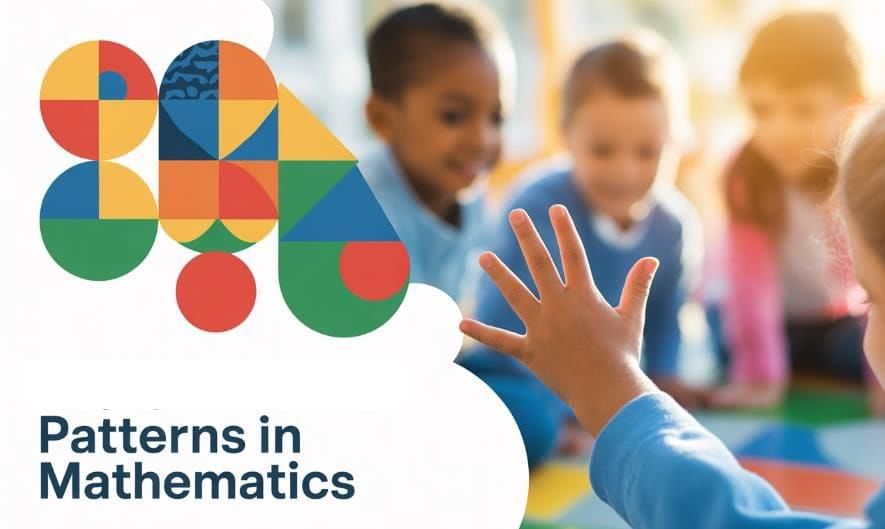Everyday Mathematics: Patterns in Mathematics | Maths Olympiad Class 6 PDF Download

Q1: What is the next number in the sequence: 2, 6, 12, 20, 30, …?
(a) 36
(b) 40
(c) 42
(d) 44
Ans: (C)
The differences are 4, 6, 8, 10, … (increasing by 2).
Next difference = 12.
So, 30+12=42.
Thus, the answer is 42.
Q2: Which symbol will appear at the 20th position in the repeating pattern: ▲, ◼, ●, ▲, ◼, ●, … ?
(a) ▲
(b) ◼
(c) ●
(d) ◼ and ●
Ans: (B)
The pattern repeats every 3 symbols.
20 ÷ 3 = 6 remainder 2.
So, the 20th term will be the 2nd symbol in the cycle = ◼.
Thus, the answer is ◼.
Q3: Find the missing number: 5, 10, 20, 40, __, 160.
(a) 60
(b) 70
(c) 80
(d) 100
Ans: (C)
Each term is multiplied by 2.
So, 40×2=80.
Thus, the missing number is 80.
Q4: The missing number in the sequence 1, 4, 9, 16, __, 36 is:
(a) 20
(b) 24
(c) 25
(d) 30
Ans: (C)
These are square numbers: 12,22,32,42,52,62.
So, missing = 52=25.
Thus, the answer is 25.
Q5: Which number will replace the question mark in the pattern?
2, 6, 18, 54, ?
(a) 81
(b) 108
(c) 162
(d) 216
Ans: (C)
Rule: Multiply by 3 each time.
So, 54×3=162.
Thus, the missing number is 162.
Q6: A calendar repeats every 7 days. If today is Monday, what day will it be 100 days later?
(a) Wednesday
(b) Thursday
(c) Friday
(d) Saturday
Ans: (A)
100 ÷ 7 = 14 remainder 2.
So, 100 days later is 2 days after Monday = Wednesday.
Thus, the answer is Wednesday.
|
30 videos|120 docs|59 tests
|
FAQs on Everyday Mathematics: Patterns in Mathematics - Maths Olympiad Class 6
| 1. What are some common types of patterns studied in mathematics for Class 6? |  |
| 2. How can understanding patterns help in solving mathematical problems? |  |
| 3. What role do patterns play in real-life applications of mathematics? |  |
| 4. Can you provide examples of how to identify numerical patterns? |  |
| 5. What strategies can be used to teach patterns effectively in the classroom? |  |





















